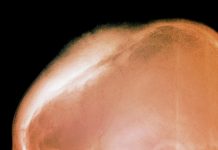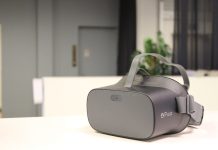It can be frustrating for people who struggle to hear everyday sounds and conversations to undergo a hearing test and have it come back normal. They know something isn’t quite right with how they hear yet standard audiological testing doesn’t reveal that. This situation could indicate a problem known as hidden hearing loss.
Although it can be more challenging to detect and treat, help is available for those who know their hearing isn’t what it should be despite what an audiogram shows.
Exposure to Loud Noise a Leading Cause of Hidden Hearing Loss
Hearing a one-time explosion or regular exposure to noise at high decibel levels can cause hidden hearing loss, especially in younger people. This type of exposure damages nerve cells within the ear, which makes it more difficult to hear certain sounds in an environment with competing background noise. When nerve cells in the ear become damaged, they can no longer send the correct signals to the brain. This means the brain struggles to interpret the sounds it receives correctly.
The primary symptom of a hidden hearing loss is struggling to hear sounds correctly in a noisy environment. Unfortunately, this can turn into a more severe hearing loss as people age without prompt intervention and treatment. People who frequently attend loud concerts, work in noisy environments, wear headphones to listen to music, and dine out in crowded bars and restaurants seem to be most at risk. Hearing aids typically do not help since the loss is atypical.
Hidden Hearing Loss is Complicated
The basic definition of hidden hearing loss is when a person has trouble understanding certain speech sounds in a noisy environment but who displays a normal hearing profile on an audiogram. Some audiologists refer to this as subclinical hearing loss. Typically, a patient with this type of loss posts a pure tone average of 10 to 20 decibels and an extended high frequency hearing loss of 8 kHz or higher. The person with hidden hearing loss also displays impairment with a speech-in-noise hearing.
These figures provide a broad guideline for diagnosing and treating hidden hearing loss. A narrower definition known as synaptopathy could apply as well. This term refers to reduced functionality between the brain and ear. Most audiologists prefer to work with the broader definition because it allows them to identify and treat more people with hidden hearing loss and other disorders of the central auditory system.
Using the broader definition of hidden hearing loss can help audiologists identify and help people earlier in life. In a recent study conducted by David Moore, a PhD who works for Cincinnati Children’s Hospital and Medical Center as the director of its Communication Sciences Research Center, indicates that hidden hearing loss can show up as early as elementary school. Children who showed a pure tone average of 10 to 15 decibels already had difficulty keeping up in reading and other areas that required strong speech-in-noise hearing skills.
Diagnosis and Treatment of Hidden Hearing Loss
Audiologists are becoming increasingly aware of the epidemic of hidden hearing loss. They are being more careful in how they deliver a diagnosis or lack thereof to patients to avoid seeming like they don’t believe them when a standard audiogram comes back normal. That simply means the audiologist has more work to do. Some of the tools audiologists currently use to help detect the nerve cell damage that causes hidden hearing loss include:
- Auditory brainstem response test
- Otoscopy
- Pure tone test of speech and speech reception threshold using octave band frequencies
- Speech reception threshold
- Tympanometry
- Words-in-noise test (WIN)
- Word recognition in quiet test
Of these, the WIN test is especially useful for audiologists because it can help them determine the degree of hidden hearing loss from mild to profound.
Since hearing aids aren’t useful in treating hidden hearing loss, audiologists and patients should work together to create a customized treatment plan. This might include some of the following recommendations:
- Avoid sitting by noisy equipment such as vents and fans
- Ask the speaker to look directly at the person with hidden hearing loss
- Choose carpeted environments whenever possible
- Request an out-of-the-way table or one with a padded booth when dining out in a restaurant
- Use close captioning where available
For those unable to afford hearing aids or access the necessary audiology professionals for fittings, there are new over-the-counter devices that offer hope. For a fraction of the cost, these so-called “hearables” look and function much like normal wireless earbuds, but also boast the ability to enhance speech and reduce background noise in crowded environments. Perhaps soon these devices will help alleviate the severity of hidden hearing loss for many.







